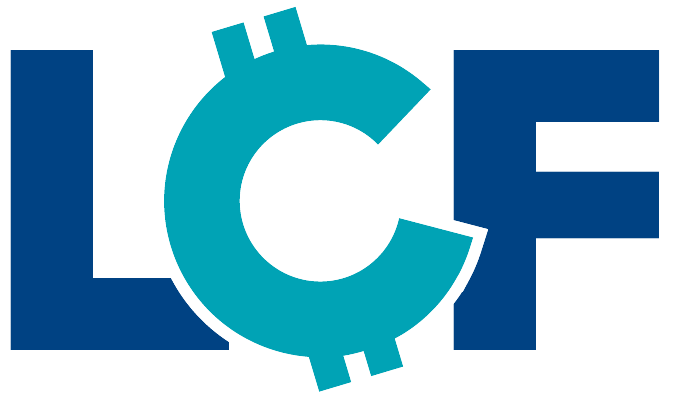What is Bridge Financing and How Can My Business Use It?
Lets Get Started
If you’re a business owner looking for business financing to bridge the gap between buying a new property or asset and selling your current one, then bridge financing may be the solution you need. Bridge financing is a type of short-term loan or other form of funding that provides immediate capital to businesses that need it. While bridge financing can be an expensive option, it can provide businesses with quick access to capital and help them take advantage of time-sensitive opportunities. In this article, we’ll explore what bridge financing is, how it works, and how businesses can use it to achieve their financial goals. We’ll also discuss the pros and cons of bridge financing and provide examples of when it may be a good financing option for your business.
What is Bridge Financing?
Bridge financing for businesses is short-term financing options that are used to provide immediate capital to businesses that need it. As the name suggests, it acts as to “bridge” the gap between the need for capital and the availability of more permanent financing solutions. Bridge financing is typically used by businesses to finance new projects, such as acquiring new properties or assets, while waiting for the sale of existing properties or the availability of long-term financing options.
Common Uses of Bridge Loans
Business bridge loans are commonly used to cover a variety of expenses. For example, a business owner may use a bridge loan to finance the purchase of a new property or asset while waiting for the sale of their current property to close. Bridge loans can also be used to cover closing costs or to provide working capital while waiting for longer-term financing to become available. Some businesses may use bridge financing to pay off high-interest credit card debt or to refinance existing debt with lower loan rates. Business bridge loans can also be used to fund interim financing needs, such as making a lump sum payment or covering unexpected expenses. Because bridge loans typically have higher interest payments than long-term funding options, they are not always the most cost-effective financing solution. However, for businesses with good credit history and prepayment flexibility, bridge loans can provide a useful source of short-term financing from bridge loan lenders.
Thinking Beyond Bridge Loan Financing
While we reference bridge loans above, it’s important to remember, that bridge financing doesn’t have to come in the form of a loan, and more often than not, it doesn’t. Loans often take weeks or months to get approved and funded which is why when someone needs funding today to get them through until the permanent funding solution is available, they turn to a merchant cash advance. With funding happening in usually a single business day, providers can ensure that small businesses have the funding they need now.
Key features of bridge financing for businesses
Short-Term Financing
Bridge financing is a short-term financing option that are typically repaid within a few months to a year. The short-term nature of bridge financing allows businesses to access immediate capital without committing to long-term financing options.
Higher Interest Rates
Because bridge loans are considered to be riskier financing options, they typically come with higher interest rates than other types of funding. However, businesses can often negotiate interest rates and terms with the funder to make it more affordable.
Secured
Bridge financing for businesses are might be secured, which means that the funding is secured by collateral, such as the business’s property, inventory, or equipment. In the event of default, the funder can seize the collateral as repayment. For those looking to avoid this, consider an MCA.
Quick Access to Capital
Bridge loans can provide businesses with quick access to capital when they need it. This can be particularly useful for businesses that need to take advantage of time-sensitive opportunities, such as acquiring a new property or asset.
Flexible Terms
Bridge loans for businesses can be structured in a variety of ways to meet the needs of the business. For example, some bridge loans may have interest-only payments during the loan term, with the principal due at the end of the loan term. On the flip side, MCAs use what is called a factor rate.
How Does a Bridge Loan Work?
A bridge loan is a short-term financing option that can be used by businesses to cover immediate financial needs while waiting for a more permanent financing solution. Bridge loans are typically used to bridge the gap between buying a new property or asset and selling a current one. Here’s how a bridge loan typically works for businesses:
1. Application Process: The first step in getting a bridge loan is to apply with a lender. Lenders will evaluate the business’s financial situation, including their credit score, financial statements, and collateral, to determine if they are a good candidate for a bridge loan.
2. Loan Amount: Once the business is approved for a bridge loan, the lender will determine the loan amount based on the value of the collateral, such as the business’s property, inventory, or equipment.
3. Loan Terms: Bridge loans typically have short repayment periods, typically ranging from a few months to a year. They also come with higher interest rates than other types of financing because they are considered riskier loans. However, some lenders may offer interest-only payments during the loan term, with the principal due at the end of the loan term.
4. Repayment: At the end of the bridge loan term, the borrower must either pay off the loan in full or refinance the loan with a more permanent financing solution. If the business is unable to pay off the loan, the lender may foreclose on the collateral used to secure the loan.
Again, loans are different than MCAs so the process looks a little different if you are going this way instead. The biggest difference is the easy application process.
Types of Bridge Loans
There are several bridge loan options for businesses, each designed to meet specific financial needs. Here are some of the most common types of bridge loans for businesses:
Commercial Real Estate Bridge Loans
Commercial real estate bridge loans are short-term financing options that are used to finance commercial properties, such as office buildings, retail spaces, or industrial warehouses. Commercial real estate bridge loans can be used to finance new construction or to purchase existing properties while waiting for long-term financing options to become available.
Accounts Receivable Financing
Accounts receivable financing, also known as invoice factoring, is a type of bridge loan that allows businesses to access capital by selling their outstanding invoices to a lender. The lender provides the business with immediate cash for the invoices, and then collects the payment from the customer when the invoice is due.
Swing Loans
Swing loans are short-term financing options that are used to finance new projects, such as construction or development, while waiting for long-term financing options to become available. Swing loans are typically unsecured and can be used to finance a variety of projects, such as new construction, renovation, or expansion.
Equipment Financing
Equipment financing is a type of bridge loan that is used to finance the purchase of new equipment or to upgrade existing equipment. The loan is secured by the equipment, and the lender may require a down payment or other collateral to secure the loan.
Personal Bridge Loans
Personal bridge loans are short-term financing options that are used by business owners to bridge the gap between buying a new property or asset and selling their existing property. Personal bridge loans are typically secured by the business owner’s personal assets, such as their home or other property.
Merchant Cash Advances (MCAs)
Merchant Cash Advances offer a flexible and swift financing option for businesses in need of immediate capital. Unlike loans, MCAs provide funds based on a company’s future revenue. The advance is repaid through a percentage of daily or weekly sales with a repayment schedule that aligns with the business’s cash flow. This type of financing is particularly beneficial for businesses looking for a bridge without the stringent requirements or lengthy approval processes of traditional bank loans. MCAs can be used for a variety of purposes, including inventory purchase, equipment upgrades, or any other immediate operational needs, offering a lifeline to businesses seeking quick and accessible funding solutions.
Pros of Bridge Loans:
Bridge loans can offer businesses several advantages, such as quick access to capital, flexibility in loan terms, and the ability to bridge the gap between financing a new project and receiving payment.
1. Short-term Financing: Bridge loans are designed to be short-term loans, which can be beneficial forborrowers who need funds quickly.
2. Flexible Repayment Terms: Bridge loans have flexible repayment terms that can be customized to meet the unique financial needs of businesses. Depending on the lender and the specific terms of the loan, businesses may have the option to make interest-only payments during the loan term, with the principal due at the end of the loan term. This flexibility can help businesses manage their cash flow and reduce the risk of default.
3. No Monthly Payments: Some bridge loans do not require monthly payments, which can help ease the borrower’s cash flow.
4. Quick Funding: Bridge loans are often funded quickly, which can be helpful for borrowers who need funds to close quickly.
Cons of Bridge Loans:
While bridge loans can be a useful financing option for businesses, there are also some potential downsides to consider. Here are some of the cons of bridge loans for businesses:
1. Short Repayment Periods: Bridge loans are designed to be short-term financing options, with repaymentperiods typically ranging from a few months to a year. The short repayment periods can put pressure on businesses to come up with the funds to repay the loan quickly, which can be challenging if the business does not have a steady cash flow.
2. Stricter Underwriting Requirements: Because bridge loans are considered to be riskier financing options, lenders may have stricter underwriting requirements than other types of loans. This can make it more difficult for some businesses to qualify for a bridge loan.
3. Risk of Default and Foreclosure: Bridge loans are typically secured loans, which means that they are secured by collateral, such as the business’s property, inventory, or equipment. If the business is unable to repay the loan, the lender can foreclose on the collateral to recover their funds.
4. Upfront Fees: Bridge loans may come with upfront fees, such as origination fees, appraisal fees, or application fees. These fees can add up quickly and increase the cost of the loan.
How to Qualify for a Bridge Loan:
To qualify for a bridge loan, borrowers typically need to meet certain requirements. These requirements may vary depending on the lender, but some common requirements include:
Good Credit Score
Borrowers will typically need a good credit score to qualify for a bridge loan. MCAs can supply bridge financing options for those with lower credit scores.
Debt-to-Income Ratio
Lenders will look at the borrower’s debt-to-income ratio to determine whether they can afford to repay the loan.
Financial Institution
Borrowers may need to work with a financial institution that offers bridge loans, such as a bank or credit union.
Underwriting
Borrowers may need to go through an underwriting process to qualify for a bridge loan.
Alternatives to Bridge Loans:
Bridge loans can be a useful financing option for businesses that need short-term funding to bridge the gap between buying a new property and selling their current one. If a bridge loan is not the right financing option for you, there are several alternatives to consider, such as:
Gap Financing
Gap financing and bridge financing are both short-term financing options for businesses, but there are some key differences between the two. Gap financing is used to cover the gap between the total cost of a project and the amount of funding that is available from other sources. Gap financing can be used to finance projects such as real estate development or business expansion, and it is typically provided by government agencies or non-profit organizations.
On the other hand, bridge financing is used to bridge the gap between the need for immediate capital and the availability of more permanent financing options. Bridge financing is typically used by businesses to finance new projects, such as acquiring new properties or assets, while waiting for the sale of existing properties or the availability of long-term financing options. Bridge financing is typically provided by private lenders, such as banks or alternative lenders, and it is secured by collateral, such as the business’s property or equipment.
Swing Loans
A swing loan is a short-term financing option that is similar to a bridge loan. However, swing loans are typically used for businesses that need to bridge the gap between financing a new project and receiving payment from a contract. Unlike bridge loans, swing loans are typically unsecured and may come with lower interest rates.
Permanent Financing
If your business needs financing for a new purchase, permanent financing may be a better option than a bridge loan. Permanent financing is a type of long-term financing that is used to purchase a new property or asset. Permanent financing can come with lower interest rates than bridge loans and may offer more favorable loan terms.
Interest-Only Loans
Interest-only loans are another type of financing option that businesses can consider. Interest-only loans allow businesses to make interest-only payments for a period of time, which can be helpful for businesses that need to conserve cash flow. However, interest-only loans can be risky for businesses that are not able to make full principal payments when the loan term ends.
Traditional Loans
Traditional loans, such as term loans or lines of credit, may also be a better option than bridge loans for businesses. Traditional loans can offer lower interest rates, longer repayment periods, and more favorable loan terms. However, traditional loans can also come with stricter underwriting requirements and longer application processes.
Government Financing
Businesses can also consider government financing options, such as Small Business Administration (SBA) loans. SBA loans can offer lower interest rates and more favorable loan terms than bridge loans or other types of financing. However, SBA loans can also come with stricter eligibility requirements and longer application processes.
Closing Thoughts:
In conclusion, bridge financing can provide a valuable short-term solution for any type of business that need immediate capital to bridge the gap between financing a new project or property and receiving payment from a contract. However, as with any financing option, there are pros and cons to consider, and businesses should carefully evaluate their options before deciding on a bridge loan. While bridge loans can be expensive and come with higher interest rates than other financing options, they can offer quick access to capital and flexible repayment terms. Businesses can also consider alternative financing options, such as swing loans, permanent financing, interest-only loans, traditional loans, and government financing. Ultimately, the right financing optionwill depend on the specific financial needs of the business and its ability to repay the loan. By carefully evaluating their options and working with a trusted lender, businesses can find the financing solution that best meets their needs and helps them achieve their financial goals.
*Repayment in this context describes the process of repurchasing a merchant cash advance. It does not describe the process of repaying a loan. MCAs are legally distinct from loan products.





